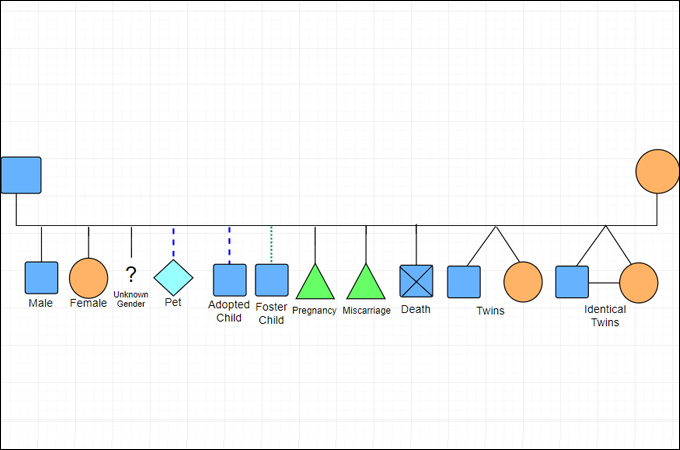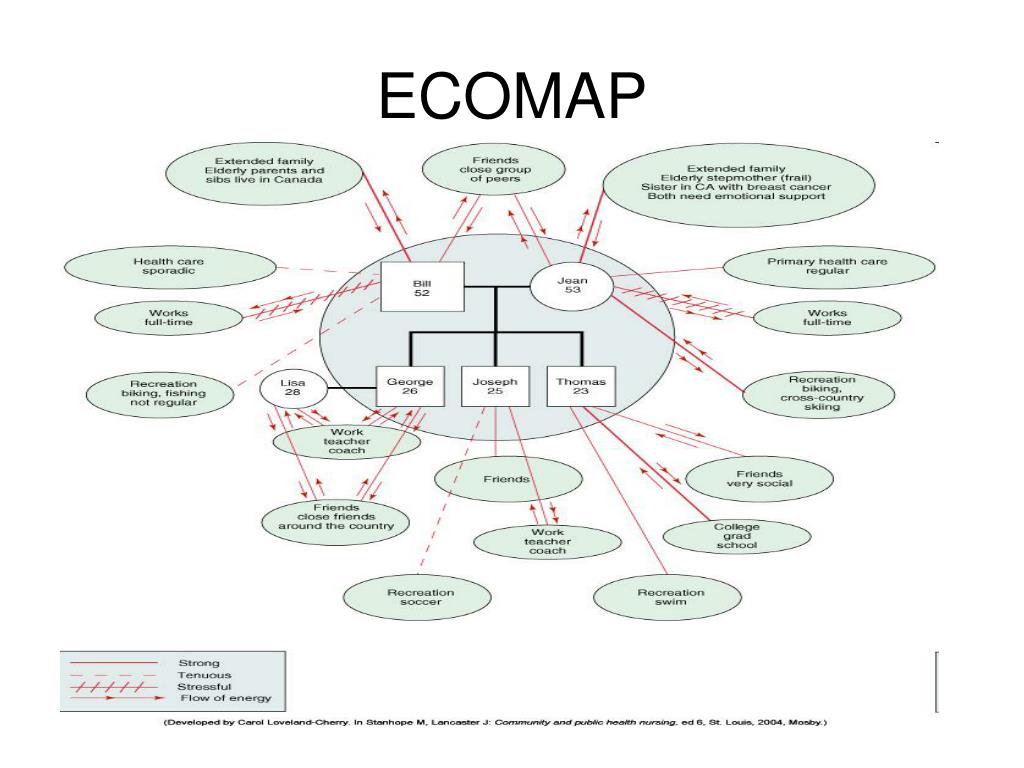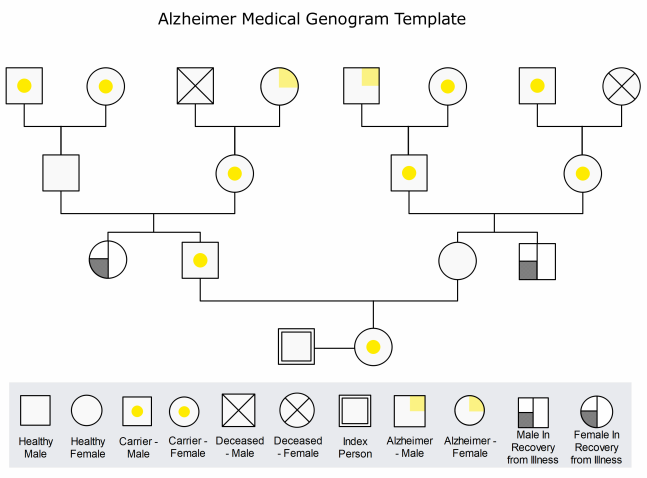

Oxford: Radcliffe, 2002.īefore you can read a genogram, you need an understanding of what the symbols mean. Narrative-based primary care: a practical guide.
#Example genogram how to
How to draw a genogram Taken from Launer, J. Below is an example of genogram template: It shows key information about an individual and their family. In a genogram, you will find symbols representing a person and their family. A cross through a symbol shows the person is dead.Triangle usually used for a pregnancy or sometimes for a person with unknown gender (and sometimes a question mark).Genograms basic symbols include but are not limited to the following Information gathered can help a worker to be more sensitive and empathetically respond to elements of the story presented.It allows a person to tell their story at their own pace.Genograms can be used as a visual tool to encourage young people to talk about their family.


#Example genogram professional
Genograms are not just a pictorial display of relationships, it must include professional judgement about what you need to include, and how to interpret it is key in analytical assessments. Genograms or monograms are also a key part of the process of assessment in social work and other professions, such as nursing. Genograms and ecomaps are like chronologies (the arrangement of events or dates in order of how they occur). In social work practice, they were made popular by the work of Maria McGoldrick and Randy Gerson (1985). Genograms were first used in the 1960s as a means of ‘tracking a presenting problem thorough the generations’ (Bowen, 1978). You may also find this article on Ecomaps useful. You can think of it as a really detailed family tree. It goes beyond a simple traditional family tree and shows the dynamics of a family over multiple generations. It can also be an organised chart of a person’s family background and medical history. It is a useful tool for social work professionals to help gather information about a person’s family. What is genogram in social work?Ī genogram uses a set of symbols to help social workers understand family dynamics. It offers a pictorial display of a person’s family relationships and medical history. A genogram is a picture worth a thousand words!


 0 kommentar(er)
0 kommentar(er)
